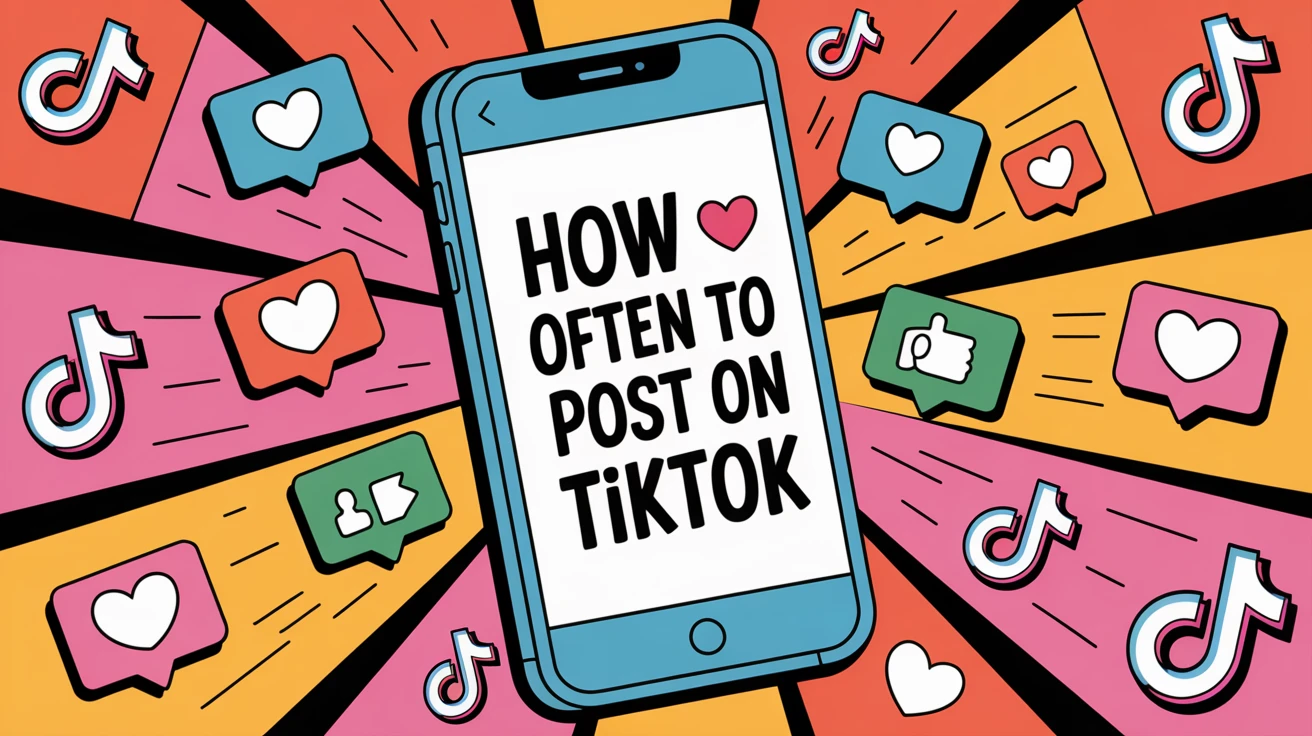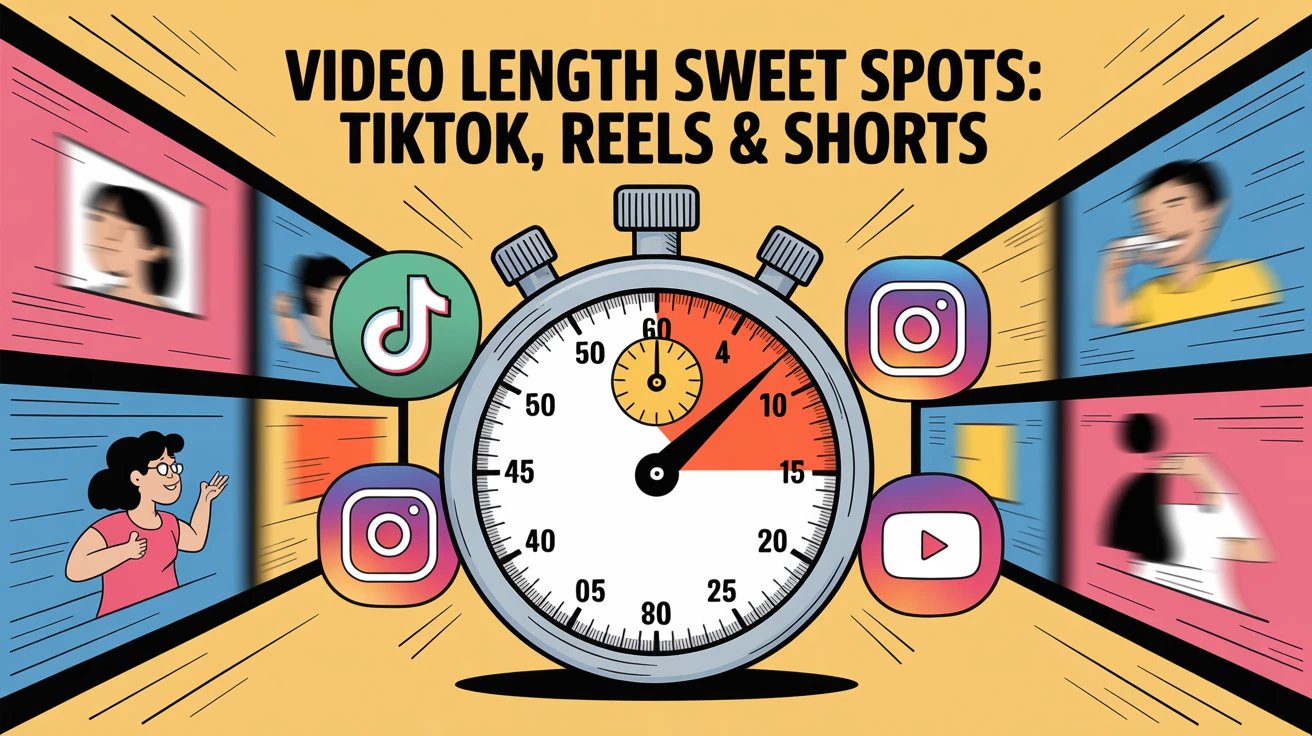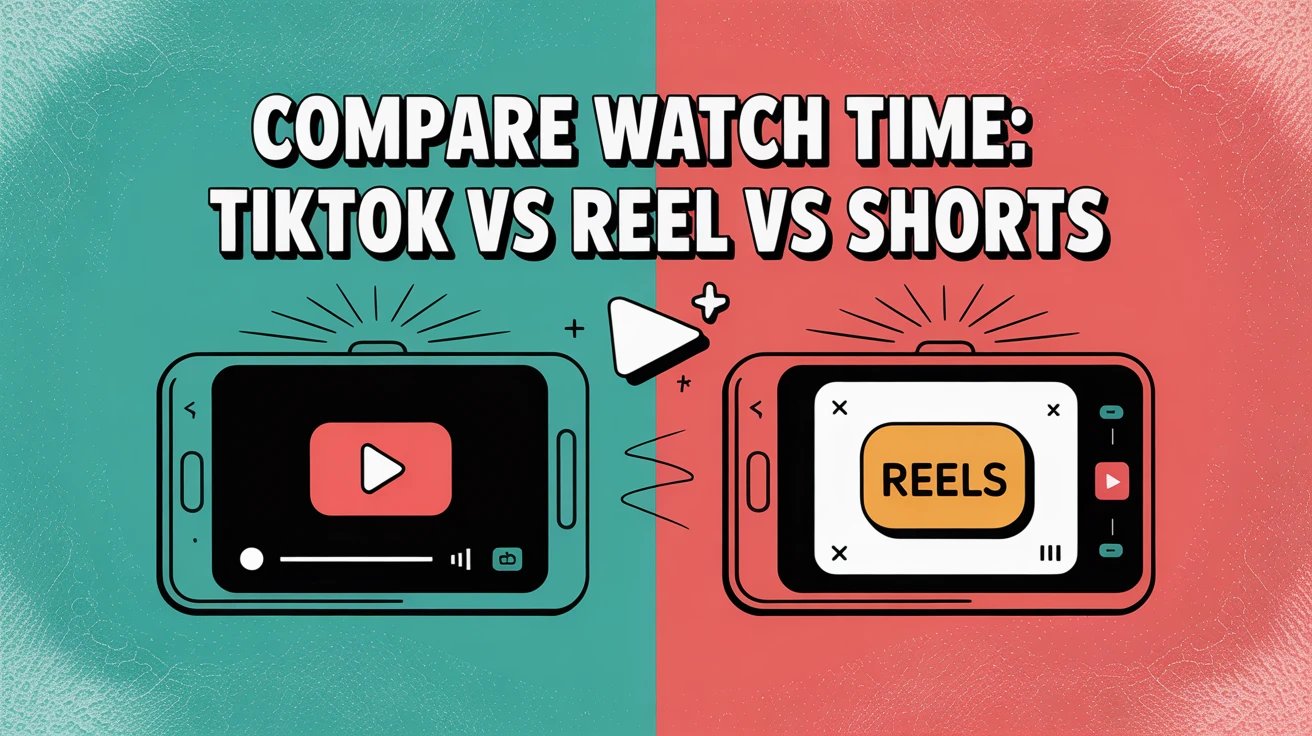You're probably overthinking your TikTok posting frequency. Should you post three times a day? Once a day? A few times a week? Too much and you risk audience fatigue (or worse, spam filters). Too little and the algorithm forgets you exist.
Posting frequency matters, but not in the way most creators assume. It's not about hitting some magic number. It's about finding your sustainable rhythm that balances consistency with quality.
This guide breaks down the actual data on TikTok posting frequency (spoiler: it comes from analyzing 11 million posts), helps you avoid the most common mistakes, and shows you how to track what's actually working for your account.
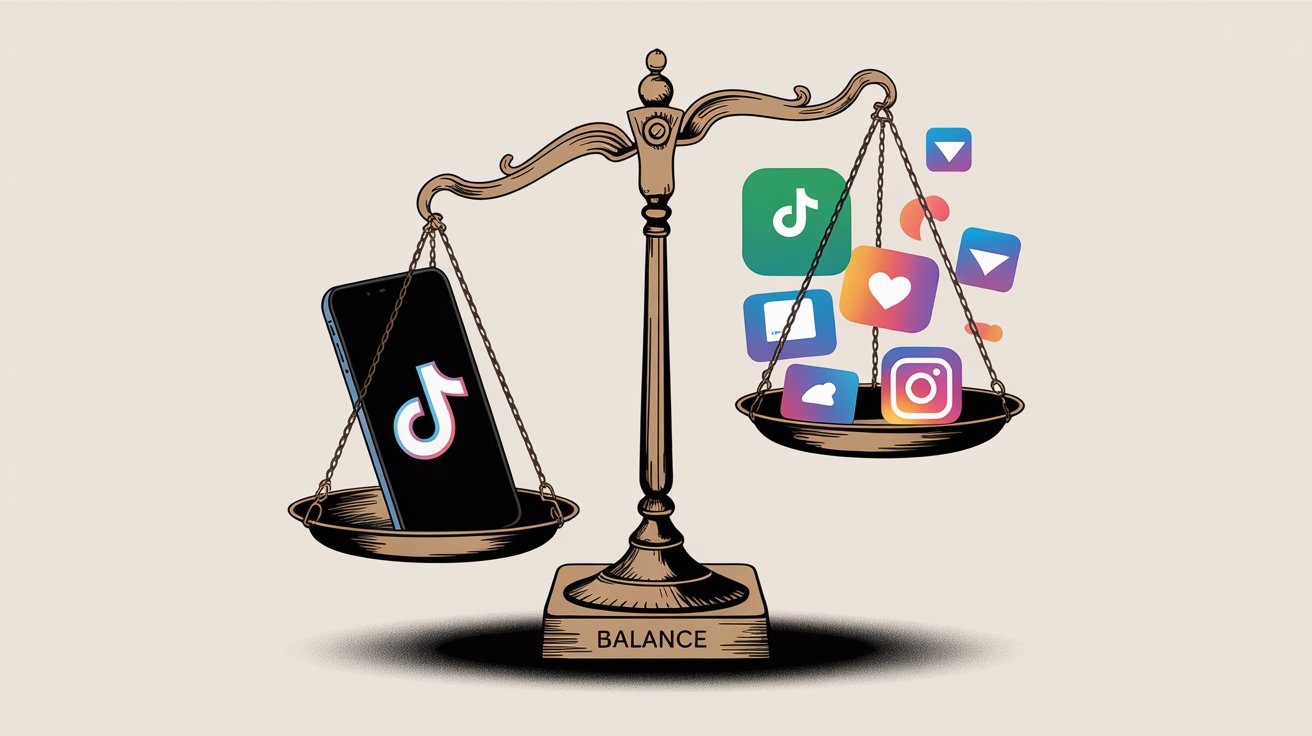
What is the Best TikTok Posting Frequency? (Data-Backed Answer)
If you want the short version, here's what the research shows:
The sweet spot for most creators is 2 to 5 posts per week. Research analyzing over 11 million TikTok posts found that accounts posting in this range saw roughly 17% higher views per video compared to those posting just once a week.
That's a significant boost without requiring you to post multiple times daily.
TikTok's official guidance historically suggested posting 1 to 4 times per day, but the 2025 data shows you don't need that aggressive a schedule to succeed. Posting more frequently does continue to help (up to about 34% higher views for the most active accounts), but the gains start to flatten out. You get diminishing returns after that initial jump from 1-2 posts per week to 3-5 posts per week.
Here's what that looks like in practice:
| Posting Frequency | Average Views Per Post | Performance vs. 1/Week |
|---|---|---|
| 1 post/week | Baseline | 0% |
| 2-5 posts/week | Higher engagement | +17% |
| 6-10 posts/week | Continued growth | +25-30% |
| 11+ posts/week | Marginal gains | +34% (diminishing returns) |
Data from Buffer's analysis of 11M+ TikTok posts
Notice something important here? The biggest performance jump happens when you move from posting once a week to a few times a week. Going from casual to consistent matters more than going from consistent to hyperactive.
A few non-negotiables regardless of your chosen frequency:
-
Consistency beats intensity. Posting 3 times a week every week will outperform posting 10 times one week and then going silent for three weeks. The algorithm rewards accounts that maintain regular activity.
-
Quality always trumps quantity. Three excellent videos will beat seven mediocre ones every single time. Never sacrifice content quality just to hit a posting quota.
-
Don't dump content. Even if you have 10 great videos ready, posting them all in one day triggers spam filters. Space them out. Most experts recommend no more than 1 to 4 posts per day maximum, with spacing throughout the day.
-
Monitor your results religiously. What works for one account won't work for every account. Use TikTok Analytics or a tool like Shortimize to track how your view counts and engagement respond to your posting frequency. If bumping from 2 posts per week to 5 boosts your metrics, great. If quality starts slipping or engagement drops, scale back.
Start with 3 to 5 posts per week and adjust based on what your data tells you. That's frequent enough to stay visible without burning yourself out or overwhelming your audience.
Why Does Posting Frequency Matter on TikTok?
Regular posting isn't just a best practice. It's fundamental to how TikTok's algorithm works.
The algorithm needs data to understand your content. Every video you post gives TikTok more signals about what you create, who enjoys it, and when they engage. Creators who post frequently provide the algorithm with a richer dataset to work from, which helps it confidently push your content to the right viewers.
This is why accounts that post regularly tend to get favored by the For You Page algorithm. The platform can identify patterns: your content style, your audience's behavior, optimal posting times. Sporadic posting? The algorithm struggles to find those patterns.
Understanding how TikTok's 2025 algorithm update changed content distribution can help you optimize your posting strategy even further.
Think of it this way: each video is a lottery ticket for virality. The more tickets you have in the game, the higher your odds one takes off. You can't predict which video will explode, but you can increase your chances by maintaining a steady flow of content.
Your audience expects consistency too. TikTok users have endless content at their fingertips. If you disappear for weeks, they'll forget you (or find someone else). But when you post on a predictable schedule, you start to build anticipation. Followers learn to check for your content. You become part of their routine.
Some creators even tell their audience when to expect new videos ("new post every Tuesday and Friday"). That sets expectations and holds you accountable.
Plus, frequent posting accelerates your learning curve. The more videos you publish, the more data you gather about what works. Maybe your comedy skits get triple the views of your product reviews. Maybe duets outperform original videos. Maybe videos under 15 seconds get better completion rates than 60-second pieces.
You won't discover these patterns by posting once a month. But post three times a week for a month? You'll have 12 data points to analyze and iterate from. Understanding what makes content go viral can help you identify which of your videos are truly breaking through.
That said, more content isn't automatically better. Balance matters. You need enough frequency to feed the algorithm and engage your audience, but not so much that you sacrifice quality or trigger spam detection.
What Does TikTok Recommend for Posting Frequency?
So what does TikTok itself say about posting frequency?
TikTok's official guidance has historically recommended posting 1 to 4 times per day for optimal results. That's an aggressive cadence aimed at ambitious creators and brands with dedicated content teams. Many successful TikTokers do post daily or even multiple times daily.
But is that pace actually necessary in 2025?
Enter the data. Buffer's social media team analyzed a massive dataset: over 11.4 million TikTok posts from 150,000+ accounts. They wanted to see how posting frequency truly impacts performance.
The findings challenge the "post multiple times daily" narrative.
The steepest performance gains happen between 1 post per week and 2 to 5 posts per week. Moving into that range yielded about 17% higher average views per video. Posting even more frequently (6-10 times per week, or 11+ times per week) did continue to boost views, but with diminishing returns. The biggest jump in effectiveness comes when you go from posting rarely to posting consistently, not from posting consistently to posting constantly.
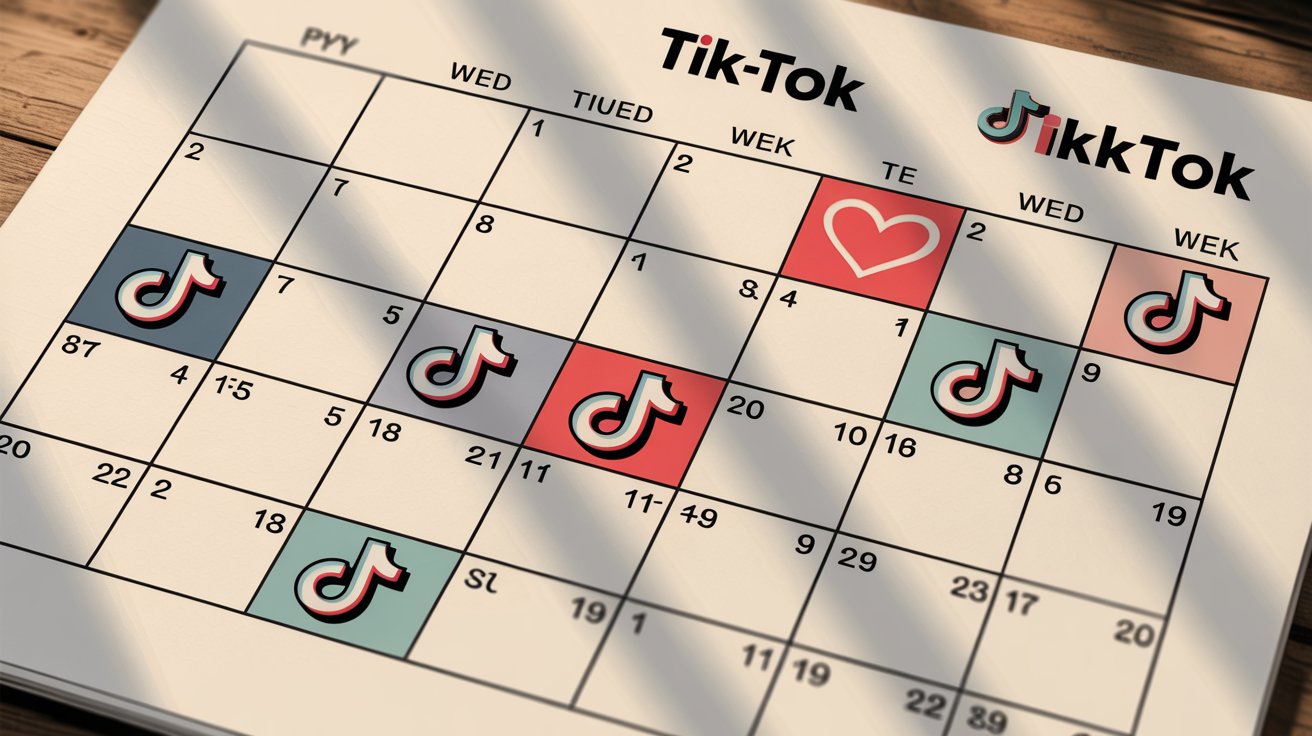
Here's the interesting part: median video performance stayed relatively flat regardless of posting frequency. The median video got around 500 views whether the account posted once a week or 10+ times a week.
So why does higher frequency help overall?
Because frequent posting increases your chances of hitting a viral video. The top 10% of videos (90th percentile) from high-frequency accounts had dramatically higher view counts than those from infrequent posters. Essentially, posting more often gives you more shots at producing an outlier hit. Most videos perform similarly, but the breakout videos lift your overall average.
What are actual creators doing? Industry surveys found most marketers were posting 4 to 6 times per week on TikTok. That aligns with the data sweet spot and reflects a practical balance: staying active without overextending resources.
Very few brands or solo creators can sustain multiple posts per day indefinitely. Most settle into a near-daily rhythm during weekdays, or a steady every-other-day schedule.
Key insight: You don't need to post 3 times a day to succeed on TikTok. A handful of quality videos each week (3-5 posts) is often enough to see meaningful growth, especially if you're consistent.
If you can post 5 to 7 times per week (basically daily or close to it) without compromising quality, that's excellent. But if that pace is unsustainable for you, don't stress. Starting with 2 to 3 posts per week will already put you ahead of the once-a-week crowd and likely boost your engagement. Scale up only when you're confident you can maintain quality.
Posting once in a blue moon? That's the worst thing you can do. Aim for consistency first, then increase frequency as long as your content remains strong. Using TikTok analytics tools can help you track what posting frequency works best for your specific audience.
Should You Prioritize Quality or Quantity on TikTok?
Posting frequently sounds great in theory. But there's a catch: the algorithm doesn't reward volume if your content is mediocre.
TikTok is ruthlessly content-driven. A boring or low-effort video won't gain traction just because you uploaded five others that same day. If anything, flooding your profile with subpar content can backfire. It drags down your average engagement, frustrates viewers, and trains the algorithm to see your content as less valuable.
Quality is non-negotiable. Content experts emphasize this repeatedly: never sacrifice quality for quantity. If you can produce 3 genuinely engaging TikToks per day, fantastic. But most creators can't sustain that. It's far better to post a few times a week with high-value content than to post every single day with rushed, half-baked videos.
Consider this example. Analysis of brand performance found cases where brands tried hitting the "4 videos per day" benchmark and actually saw their engagement drop. Why? Because they hadn't figured out what resonated with their audience. The videos weren't connecting, so pumping out more of them did no good.
One well-crafted video with a killer hook can often generate more followers and likes than 20 forgettable ones.
So how do you maintain quality while posting consistently? A few proven strategies:
① Nail your hooks.
The first 2 to 3 seconds of your TikTok determine whether viewers watch or scroll. A strong hook is everything. If you're posting multiple times a week, dedicate real thought to how each video opens. Make it impossible to scroll past.
② Stay in your niche.
If you've identified a content theme or format your audience loves (quick tutorials, comedic skits, product reviews, whatever), double down on that. Don't dilute your feed with random filler content just to hit a posting quota. Consistency in theme builds audience trust and algorithmic understanding.
③ Use analytics to identify winners.
Look at your past videos. Which ones got above-average views or engagement? Those signal what "quality" means to your specific audience. Use those insights to guide future content instead of blindly posting more of everything. Tracking engagement metrics helps you understand what's actually working.
④ Maintain basic production standards.
TikTok doesn't demand Hollywood budgets, but basics like decent lighting, clear audio, and no glaring mistakes do matter. Production quality standards affect whether the algorithm promotes your video. If churning out videos forces you to cut corners (dark footage, sloppy edits, incoherent messaging), slow down. Each video represents your brand. Make it count.
Frequency helps you find your audience and test ideas, but only quality content actually connects. A single outstanding video can generate more impact than 20 forgettable ones.
Think of posting frequency as the vehicle for amplifying success, not as a substitute for creativity or effort. Learn how to optimize your TikTok content for maximum visibility to ensure every video you post has the best chance of success.
Can You Post Too Much on TikTok? (Overposting Risks)
On a platform as fast-paced as TikTok, it might seem impossible to post "too much." But you absolutely can overdo it.
Here's why posting excessively can hurt you:
Algorithmic Spam Filters
TikTok's systems flag accounts that exhibit spammy behavior. Posting an excessive number of videos in a short time frame is a known red flag. If you dump 5 to 10 videos within an hour, the platform may limit their reach or prevent them from hitting the For You Page at all, assuming you're trying to game the system.
Even top creators who post multiple times per day space those videos out. They'll publish one in the morning, another midday, another in the evening. They're not dropping everything back-to-back.
TikTok officially suggests keeping it to 4 or fewer posts per day to avoid anti-spam issues. Go beyond that consistently, and you risk getting throttled.
Audience Fatigue
Even your biggest fans have limits. Imagine a user opens their Following feed and sees 7 videos from you since lunchtime. Chances are they won't watch all of them. They might skip your content altogether, feeling overwhelmed.
Posting too frequently can lead to lower per-video engagement because you're essentially competing with yourself for attention. Overposting may cause a drop in engagement as your audience gets burnt out or annoyed seeing you nonstop.
Your viewers need time to digest and enjoy each video. Give them breathing room. Build anticipation for your next piece rather than flooding them continuously. Maintaining healthy engagement rates requires respecting your audience's attention span.
Quality Slip-Ups
The previous section covered this, but it's worth repeating under "overposting." If you set an unrealistic posting rate (say, 5 videos every day), you'll likely end up rushing content or recycling ideas repetitively. Your 5th TikTok of the day probably won't be as fresh or thoughtful as your first.
Inconsistent quality hurts follower trust. People might start assuming "this account posts too much junk" and scroll past even your genuinely good videos.
So what's the limit? For most creators, anything above 3 to 4 posts per day on a regular basis is overkill. TikTok itself has hinted that beyond that threshold, you're not giving each video enough time to breathe.
Pace yourself. TikTok is a marathon, not a sprint.
If you have a backlog of 20 ideas, schedule them out over a couple of weeks rather than unleashing them in one marathon day. A consistent flow beats a flood followed by a drought.

What Happens If You Don't Post Enough on TikTok?
Just as you shouldn't post 100 videos a week, you also shouldn't disappear for weeks on end.
Posting too rarely is a surefire way to stagnate your growth. Here's why consistency beats scarcity:
Lost Algorithmic Momentum
TikTok's algorithm thrives on fresh content and recent activity. If you only post once a month, each video essentially starts from zero. The algorithm isn't seeing a pattern of regular engagement from your account, so it doesn't confidently distribute your content.
Creators who post consistently (even just a few times per week) give the algorithm far more data to work with. In fact, many creators report it takes a few weeks of steady posting for a new account to really "warm up" and see significant traction. If you space posts too far apart, you never get past that initial learning phase. You're resetting momentum each time.
Understanding what qualifies as a good view rate on TikTok can help you gauge whether your current posting frequency is working.
Audience Disengagement
Social media audiences can be fickle, but they also appreciate reliability. If someone follows you because they liked one video, but then you don't post again for a month, that follower will likely lose interest or forget why they followed in the first place.
Consistency helps condition your audience to expect and seek out your content. Long gaps make your profile look inactive or inconsistent. An engaged follower base can't form if you're not regularly feeding them content.
Think of it like a TV show. A series that airs sporadically versus one that comes on every week at a set time? Viewers are more likely to tune in when they know when to expect new episodes. Same concept applies to TikTok.
Competitive Disadvantage
TikTok is crowded. If you're in a particular niche (beauty, fitness, gaming, whatever), chances are competitors are pumping out content to that same audience. If they produce 20 videos this week and you produce 1, guess who stays top-of-mind?
Underposting concedes ground to more active creators. You don't want to be the least visible voice in your niche. Conducting competitive analysis helps you understand what posting frequency your competitors maintain and how you can stay competitive.
So what's "too little"? Anything less than once a week is likely too infrequent to build momentum. Even one post per week can feel slow unless you're hitting home runs every time.
Most experts suggest a minimum of 2 to 3 posts per week to keep the algorithm's attention and stay relevant to followers. If that sounds like a lot, remember videos don't all have to be masterpiece viral attempts. You can mix in lighter, fun content between your bigger productions to fill out the schedule.
Consistency is key. It's better to post at a modest but regular rate (say, twice a week every week) than to post 5 videos one week and then go silent for the next two weeks. TikTok's algorithm and your audience both respond well to a steady drumbeat of content.
Develop a regular posting schedule (whether it's Monday/Wednesday/Friday or every weekend) and try to stick to it. Not only will this help your metrics, but it also trains you to be disciplined in content creation, which is vital for long-term success.
How to Find the Right Posting Frequency for Your TikTok Niche
General guidelines (like "4 times a week is solid") can help, but the ideal posting frequency varies based on your content type and target audience.
One size does not fit all. Here's what to consider when customizing how often you should post:
1. Audience Content Consumption Habits
Different audiences have different appetites for content. Understanding who you're creating for dramatically affects your optimal frequency.
| Audience Type | Content Appetite | Recommended Frequency | Why |
|---|---|---|---|
| Gen Z/Teens | Very high (hours daily on TikTok) | 3-5+ videos/day possible | Hungry for trends, tolerate high volume, expect rapid updates |
| Millennials | Moderate (selective browsing) | 3-5 videos/week | Value quality over quantity, prefer curated content |
| B2B/Professionals | Lower (limited time) | 2-3 videos/week | Depth over frequency, niche expertise valued |
| Niche Hobbyists | Variable (passionate but selective) | 3-4 videos/week | Appreciate consistent expertise, quality matters |
A teen-focused meme account might successfully drop 3 to 5 quick videos a day because its young audience is on TikTok for hours and hungry for the latest trends. Younger, trend-driven audiences tend to tolerate (and even expect) very frequent updates. They're used to rapid-fire trend cycles and constant new content. Some brands aimed at Gen Z have seen high engagement even posting 4 to 6 times per day when the content taps into current memes and trending sounds.
In contrast, a B2B company or an educational account targeting professionals might do better with a more limited cadence. Niche or older audiences often prefer quality over quantity.
Case studies show that niche brands posting humor content saw their engagement drop when they tried upping frequency to meet a "4 per day" guideline. The constant jokey posts didn't resonate with their specific followers. When they dialed back to a couple of well-crafted videos per week (more substantive content), their audience responded much more positively.
Know thy audience. If your viewers crave daily entertainment and quick hits, feed that appetite (as long as you can keep up). If your viewers value depth or feel overwhelmed by too many posts, lean toward a moderate schedule with more impactful videos.
Use TikTok Analytics to gauge this: follower demographics, when they're online, which videos they engaged with most. That data tells you what your audience actually wants. Specialized analytics tools can reveal patterns you might miss in native analytics.
2. Content Complexity and Production Bandwidth
What does it take for you to make a TikTok?
If you're doing simple talking-to-camera tips or using quick trending sounds, you might be able to produce content relatively quickly. But if each video is a mini production (lots of editing, scripting, costumes, multi-day shoots), attempting daily posts is unrealistic.
General rule: post as often as you can consistently deliver valuable content. If that's only twice a week given your production process, that's perfectly fine. It's better to keep a slower schedule than to rush out lower-quality versions of your high-effort content just to "post more."
Also consider your team size and resources. Are you a solo creator, or do you have a content team? A big brand with a full creative team and budget might manage multiple quality posts per day. An individual creator or small business likely cannot, and that's okay.
Many find that 3 to 5 posts per week is a sweet spot balancing visibility with sanity. It provides consistent content without overloading the creator or the audience.
If you have more resources or TikTok is your full-time focus, you could try a more aggressive pace of 1 to 2 posts per day. But industry guides note that's "not for the faint of heart" and only works if you can maintain quality.
3. Competitive Benchmarking
Look around at what other creators in your niche are doing. While you don't need to copy them, it's useful context.
If all your key competitors post daily and you're only posting once a week, you might be leaving growth on the table. Conversely, if competitors post just a couple times a week and still have strong engagement, your niche might not demand high volume to stay relevant.
Do a little reconnaissance: find a few successful accounts in your category and note their posting frequency and consistency. Often you'll notice a pattern (maybe most fitness coaches on TikTok post a quick tip video every weekday, or maybe art tutorial channels upload 2 videos a week showcasing their process).
This gives you a sense of audience expectations in your content space. Analyzing competitors' posting frequency and timing is a key part of TikTok strategy. If several competitors all get peak engagement posting, say, 3 times per week on specific days, that's a strong hint about your shared audience's content appetite.
Tools like Shortimize let you monitor competitor activity and performance side by side, so you can see exactly how often they're posting and how their audience responds. That data can inform your own scheduling decisions. Social media monitoring tools can automate this competitive intelligence gathering.
4. Platform Trends and Seasons
TikTok trends move fast. Sometimes an explosion of trends (a new dance or meme every day) might temporarily encourage more posting. For instance, during a major trending challenge, you might post a few extra videos in a week to participate while it's hot.
Seasonality can play a role too. Around holidays or events, there may be more relevant content opportunities (and possibly more user activity on the app).
The key is to remain flexible. If three great trend ideas strike you in one week, you might break your usual pattern and post all three. That's fine as long as it's thoughtful and you return to a sustainable baseline after. The algorithm won't punish an occasional burst. It's more concerned with long-term consistency and not consistently spamming.
Use general best practices as a starting point, then refine based on your own results and niche. Don't feel obligated to hit some magic number because an article said so. Pay attention to your viewers and your content capabilities.
Over time, you'll discover whether you're better off doing "less but better" or if you can crank up the volume and still keep people happy.
How to Create a Consistent TikTok Posting Schedule
By now you're probably thinking, "Alright, I'll aim for more consistent posting. But how do I actually do that week in, week out?"
Keeping a steady TikTok schedule can be challenging, especially when life or creative blocks get in the way. Here are some practical strategies to help you stick to an optimal posting frequency without losing your mind (or quality standards):
Plan Ahead with a Content Calendar
Treat your TikTok like an editorial publication. Sit down and plan your content for the upcoming week or month. Jot down ideas for each day you intend to post.
This way, you're not scrambling for ideas at the last minute. A simple calendar also helps ensure you mix up your content (so you're not accidentally posting four dance videos in a row or neglecting a topic your audience likes).
Many successful creators map out themes or series for each weekday (Challenge Monday, Tip Tuesday, Behind-the-Scenes Thursday, etc.). Having this framework can streamline creation and ensure consistency.
Batch creation is a related tactic. If you have a free afternoon, film or edit multiple videos in one go. TikTok drafts and scheduling tools let you store these and publish at your planned times.
Using a content calendar and scheduling tools is essential for consistent and impactful posting. When you batch-produce content, you're less likely to hit a week where you "didn't have time to make a video." You'll have some ready to go.
Set a Realistic Schedule (and Stick to It)
Consistency is about a steady drumbeat, so choose a frequency you can realistically sustain.
If daily is too much, commit to every other day, or every weekday, or every Tuesday/Thursday. Whatever you can do reliably. It's better to start conservatively and build up than to start posting twice a day and burn out after a month.
Let your followers know your schedule, implicitly or explicitly. Some creators even mention in their bio "new videos every Monday/Wednesday/Friday" to hold themselves accountable.
When you have a routine, it becomes part of your workflow and your audience's expectations. Treat it like a business commitment. If growth on TikTok is important to you, prioritize those posting days/times and work other tasks around them when possible.
Leverage Trends Wisely
One of TikTok's blessings is how it provides constant inspiration via trending sounds, hashtags, and challenges. These can be a lifeline for filling your content calendar.
If you're ever stuck on what to post, spend some time on the For You Page or TikTok's Creative Center to spot trending formats you can put your own twist on. Trends spark quick content ideas that are likely to resonate since they're already proven.
Just ensure they align with your niche (don't force an irrelevant trend) and add your unique angle. Using a trending sound or challenge can also increase your visibility.
That said, balance trend content with original content. You don't want to rely solely on trends, but they're great for peppering into your schedule when you need a boost or a filler between bigger content pieces. Finding TikTok content ideas through monitoring can help you identify what's trending in your niche.
Use TikTok's Scheduling and Draft Features
If you have a TikTok Business or Creator account, you can schedule videos in advance using the desktop upload tool. This is incredibly handy. You can upload a batch of videos and set them to go live at specific times/days.
There are also third-party social media schedulers that support TikTok.
Even if you prefer to post manually, at least use the drafts feature in the TikTok app. You can stockpile finished (or semi-finished) videos in your drafts so that on a busy day, you can quickly post a draft instead of having to film something new under pressure.
Having a buffer of content is a lifesaver for maintaining consistency.
Monitor and Adjust Your Timing
This guide focuses mainly on "how often," but when you post during the day also matters for maximizing engagement.
Use TikTok Analytics to see when your followers are most active, and try to post around those peak times (e.g., if your audience tends to be online in the evenings, schedule posts for 7-9pm). This way, each video you post has the best shot at immediate engagement, which can amplify its reach.
If you're only posting 3 times a week, you want each of those posts to count, so time them wisely.
Also consider days of the week. Some research finds certain days (like mid-week Wednesday/Thursday) often see higher TikTok usage globally, but always prioritize your specific audience's behavior over general trends.
Stay Flexible and Listen to Feedback
Maybe you start off posting 5 times a week and realize it's too much. You're rushing content or feeling stressed. It's okay to dial back to 3 times a week.
Or maybe you've been doing twice a week and feel you can ramp up to three without issue. Adjust as needed.
Pay attention to your video performance. If you notice that when you tried posting every day your average views per video dropped, that's a sign you might be sacrificing quality or cannibalizing your own audience's attention.
Alternatively, if you increased from 2 to 4 per week and everything still looks good (or got better), then great. Keep it up or experiment with 5.
The key is to find a sustainable cadence. The only "wrong" answer is inconsistency or giving up.
And if you ever need a break (creatively or for mental health), it's okay to slow down. Just try not to vanish without any plan. Even reposting older content or doing a quick "checking in" video is better than letting an account go totally dark for long stretches.
By implementing these strategies, you'll greatly increase your odds of maintaining whatever posting frequency you decide is optimal. Remember, even the best plan only works if executed consistently.
These habits and tools will turn your posting frequency from a random guess into a well-oiled routine.
How to Track and Optimize Your TikTok Posting Performance
A crucial part of nailing the right posting frequency is tracking your results and refining your approach over time.
TikTok success isn't set-and-forget. It's iterative. As you experiment with different cadences (say you try upping from 3 posts a week to 5 for a month), keep an eye on these key metrics:
→ Views per video: Is the average holding steady or increasing with more frequent posts, or do you see it dropping as you add more content?
→ Engagement rate (likes/comments/shares per view): Sometimes posting too often can dilute engagement if videos start to slip in quality or if followers can't keep up. Ensure each video is still getting solid interaction relative to its views.
→ Follower growth: Are you gaining followers faster with a certain posting frequency? Often, more consistent posting leads to more consistent follower growth. You might notice spikes after weeks where you posted more.
→ Traffic sources: TikTok Analytics can show how many views came from For You Page vs. followers. If increasing your posting frequency boosts your FYP reach (likely by giving the algorithm more content to test), that's a good sign.
For a deeper dive, consider using a dedicated analytics tool.
Shortimize, for example, aggregates your short-form video data across TikTok (and other platforms like Reels and Shorts) into one dashboard. This makes it easier to spot patterns and correlations you might miss in TikTok's native analytics.
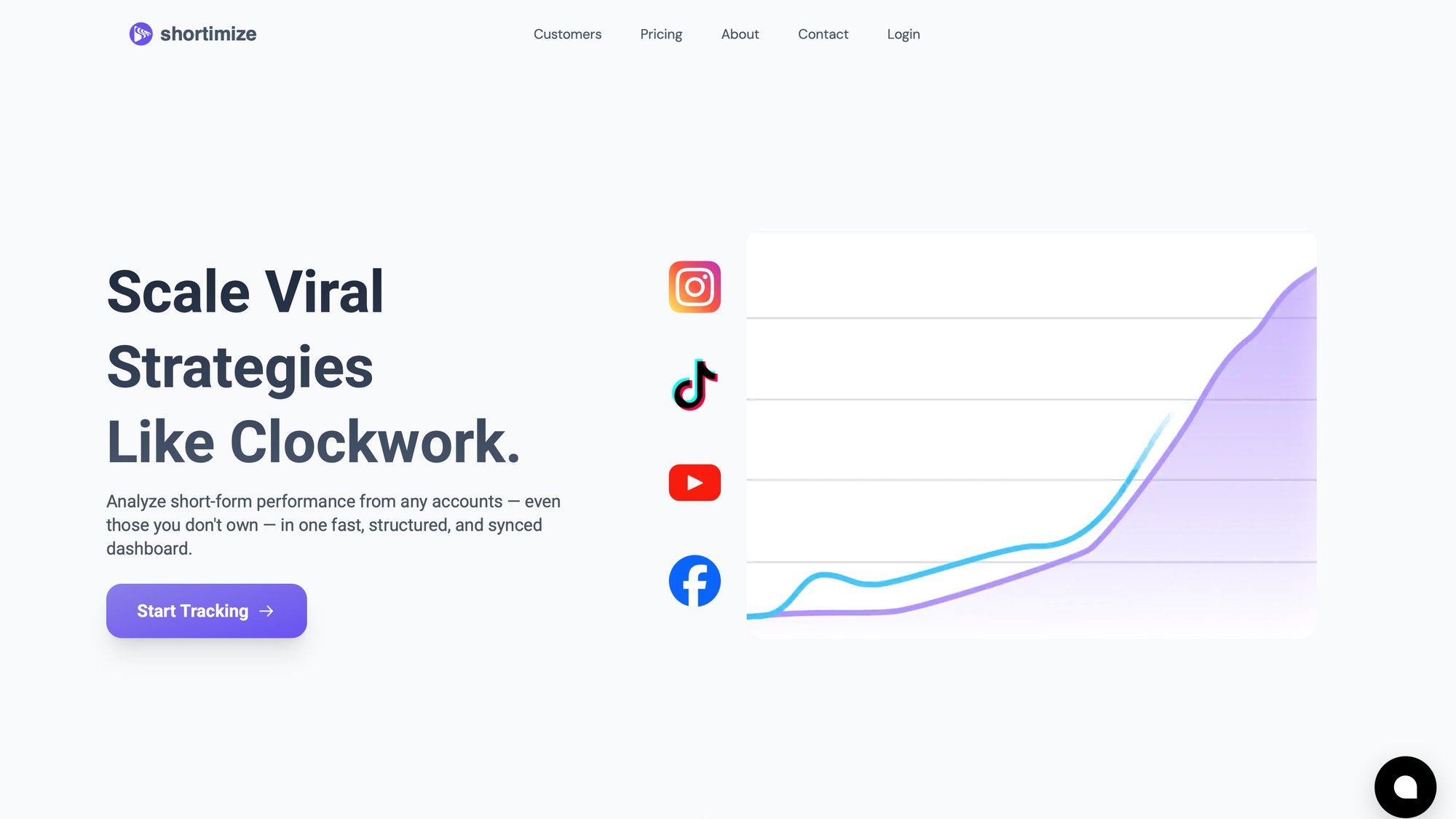
You can see trends like:
→ Do your videos perform better on days you post more?
→ What happens to your weekly views when you increased posting frequency?
→ Are there certain days of the week where posting yields higher engagement (hinting you might reallocate your frequency toward those days)?
Shortimize also lets you monitor competitor accounts side by side. You can observe how often they're posting and how their audience responds, gaining insights for your own strategy.
Pro tip: Using a tool like Shortimize, you could create a simple experiment:
-
Track your metrics for a month at one posting frequency
-
Then a month at a higher (or lower) frequency
-
Compare the outcomes
The platform's analytics and exportable reports can help quantify the impact, so you're making decisions based on data, not just gut feeling. Social media monitoring capabilities let you track not just your own performance but industry trends and competitor movements.
The "ideal" posting frequency is a moving target. It can evolve as your content, audience, and TikTok itself evolve. Continual analysis is your friend.
The good news? If you've read this far, you're already taking a data-informed approach to TikTok, which is exactly what separates the accounts that plateau from those that keep growing.
Tracking and analytics transform an average TikTok strategy into a winning strategy. Shortimize helps you automatically track what's working across all your short-form content, identify patterns in your best-performing videos, and spot opportunities you might otherwise miss.
You can even benchmark against competitors to see if you're posting as strategically as others in your niche. End-of-month analytics reviews help you continuously optimize your content strategy based on real performance data.
If you're serious about growing on TikTok, leveraging data makes a massive difference.
Consider giving Shortimize a try. You can start a 7-day free trial to get these insights working for you. It's like having a compass while everyone else is wandering in the dark.
Frequently Asked Questions About TikTok Posting Frequency

What's the Minimum Posting Frequency to Grow on TikTok?
At minimum, aim for 2 to 3 posts per week. Posting less than once a week makes it difficult to gain algorithmic momentum or maintain audience engagement. Consistency matters more than intensity. A steady twice-a-week schedule beats sporadic bursts of content followed by silence. Read our complete beginner's guide for more tips on getting started with TikTok growth.
Can I Post Multiple Times a Day Without Getting Shadowbanned?
Yes, but don't overdo it. TikTok generally tolerates up to 4 posts per day maximum as long as you space them throughout the day. Posting 5-10 videos within an hour can trigger spam filters. The key is spacing: post one in the morning, another midday, another evening. Give each video time to breathe and reach its audience.
How Long Should I Stick with a Posting Schedule Before Changing It?
Give any new posting schedule at least 2 to 4 weeks before evaluating results. The algorithm needs time to recognize patterns, and you need enough data points to see what's working. Track your key metrics (views, engagement, follower growth) during this period. If you see consistent improvement, stick with it. If metrics stagnate or drop, adjust. Learn how to diagnose performance drops with proper monitoring.
Does Posting Time of Day Matter as Much as Frequency?
Both matter, but differently. Frequency determines how often the algorithm sees your content. Timing determines how quickly your content gains initial engagement. Post when your specific audience is most active (check TikTok Analytics). A video posted at 3am might not get immediate engagement, which can hurt its algorithmic distribution. Combine optimal frequency with optimal timing for best results.
Should I Post Every Day or is 3-5 Times per Week Enough?
For most creators, 3 to 5 posts per week is sufficient for steady growth, especially if each video maintains high quality. Daily posting can help if you're trying to grow aggressively and have the resources to maintain quality. But research shows the biggest performance jump happens when going from 1 post/week to 2-5 posts/week. Daily posting yields diminishing returns unless you're consistently producing excellent content.
What Tools Can Help Me Track My Posting Frequency Results?
TikTok's native TikTok Analytics provides baseline metrics (views, engagement, follower demographics, best posting times). For more sophisticated tracking across platforms, Shortimize offers cross-platform analytics for TikTok, Instagram Reels, and YouTube Shorts in one dashboard. You can track performance trends, run posting frequency experiments, monitor competitors, and export data for deeper analysis. Understanding what social media monitoring is can help you leverage these tools more effectively.
How Do I Balance Posting Frequency Across Multiple Platforms?
Focus on your primary growth platform first (probably TikTok if you're reading this), then repurpose content to other platforms. Many successful creators post 4-6 times weekly on TikTok, then cross-post the best performers to Instagram Reels and YouTube Shorts. This gives you presence on multiple platforms without tripling your workload. Shortimize helps you track performance across all three platforms simultaneously, so you can see which content works where and optimize accordingly. Learn about cross-platform strategies to maximize your reach.
What Should I Do If I Miss My Posting Schedule?
Don't panic, and don't try to "catch up" by dumping multiple videos at once. Just get back on track with your next scheduled post. The algorithm won't penalize you for missing a day. What matters is long-term consistency, not perfection. If you know you'll miss several days (vacation, busy work period), consider batch-creating content beforehand and using TikTok's scheduling feature or drafts. If that's not possible, a brief break won't destroy your account. Just return to your regular schedule as soon as you can.
How Can I Manage Multiple TikTok Accounts with Different Posting Schedules?
Managing multiple accounts requires careful organization and strategic planning. Our guide to managing multiple TikTok accounts covers best practices for scheduling, content differentiation, and cross-account analytics. Consider using management tools that support multiple accounts to streamline your workflow and maintain consistent posting across all profiles.
Finding Your Ideal TikTok Posting Schedule: Final Thoughts
So, how often should you post on TikTok?
The simple answer: as often as you can consistently produce content that your audience will love.
For most creators and brands in 2025, that means aiming for 3 to 5 high-quality posts per week. That's frequent enough to stay on your audience's radar and please the algorithm, but not so demanding that you burn out or overwhelm viewers.
The data backs this up. Research shows the biggest performance gains happen when you move from infrequent posting to a consistent 2-5 times per week cadence. Posting more frequently can help further, but with diminishing returns.
Here's what really matters:
① Consistency beats intensity.
Posting 3 times a week every week will outperform 10 posts one week followed by three weeks of silence.
② Quality is non-negotiable.
Three excellent videos beat seven mediocre ones every time. Never rush content just to hit a number.
③ Your niche and resources matter.
A trend-focused Gen Z account might thrive with daily posts. A niche B2B account might do better with 2-3 thoughtful pieces per week. Adjust based on your audience's appetite and your production capacity.
④ Track everything and iterate.
Use TikTok Analytics or tools like Shortimize to monitor how your frequency impacts views, engagement, and growth. Treat your posting schedule as an experiment you're constantly refining.
Don't be discouraged by creators with teams and budgets churning out daily content. Focus on your sustainable rhythm. Some creators find success posting daily. Others build huge followings with just a couple updates per week. Both approaches can work when executed well.
This guide provides guardrails based on data and best practices, but ultimately you should craft a posting schedule that you can maintain long-term and that delivers genuine value to your viewers.
Keep an eye on your analytics, stay responsive to your audience's feedback, and be willing to experiment. TikTok is one of the fastest-evolving platforms out there. By staying consistent in output and agile in strategy, you'll be well-equipped to ride each wave of the algorithm.
Ready to take control of your TikTok strategy? Start tracking your posting frequency and results with Shortimize's 7-day free trial. See exactly what's working, spot your highest-performing content patterns, and make data-driven decisions about your posting schedule.
The difference between guessing and knowing your optimal frequency can be the difference between slow growth and exponential growth.
Happy posting, and may your next TikTok find its way to a million viewers!
